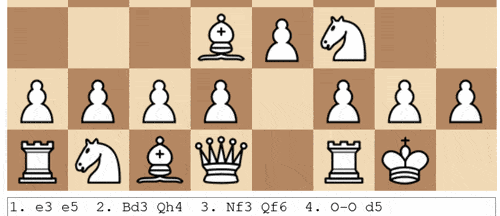Chess Maths is Fun: Engage Your Child with Mathematical Strategic Play
Hello, wonderful parents out there! Are you on a quest to find joyful learning activities for your child? Have you heard about how chess can make math fun and boost strategic thinking? If not, then you’re in for a delightful journey to explore the harmonious blend of chess and mathematics!
Why Chess is a Brilliant Game for Young Mathematicians
Chess is not just a game of strategic prowess; it’s a hidden treasure trove of mathematical concepts waiting to be unlocked by your child’s curious mind. It teaches essential skills such as critical thinking, problem-solving, and the joy of planning several moves ahead – just like in a real-life math problem!
Understanding Chess Through Numbers
Before we dive into the overlaps between chess and math, let’s take a moment to understand the basics. Your child will frequently interact with numbers in chess – be it counting the value of pieces, calculating possible moves, or assessing positions on the 8×8 chessboard.

Chess Pieces and Their Mathematical Hierarchy
Each chess piece moves in a unique pattern, almost like a dance across the board. There’s a fun analogy here with math – the way numbers have distinctive properties and operations. Here’s a brief rundown to get your child excited:
- The Pawns: Think of them as your trusty ‘ones’ in math. They represent the cornerstone of the game just like the number one is in arithmetic operations.
- The Knights: Like complex numbers, they have an unusual move, an ‘L’ shape. They jump over obstacles, introducing concepts of spatial awareness and non-linear thinking.
- The Bishops: Moving diagonally, they slice through the board like a hot knife through butter, or like a graph line cutting across the cartesian plane!
- The Rooks: Straight lines along rows and columns, they echo the straightforward path of addition and subtraction.
- The Queen: With her diverse moves, she’s like the idea of variables in algebra – versatile and powerful.
- The King: The most important but limited in movement, akin to a constant in an equation – critical and unchangeable.
Counting and Calculation in Chess
Every move in chess is a mini mental workout for arithmetic. Whether your child is capturing pieces or avoiding checkmate, they’re subconsciously calculating odds, practicing additions and subtractions. Spoiler alert for your kids: chess is a sneaky way to sharpen their math skills without them even knowing it!
Stay tuned as we move your child’s chess pieces in sync with their math knowledge, explore strategic thinking, and most importantly, learn how fun and mathematics go hand-in-hand on the chessboard. After all, who said learning couldn’t be as exciting as a game of chess?

5 Essential Tips for Parents: Making Chess and Math a Fun Combo for Kids
Greetings, creative parents looking to turn math into a playful and thought-provoking adventure! Curious about how chess can become a fabulous tool for making math engaging for children? I’m here to share some magical pointers to combine these two worlds in a way that will captivate your little learners’ imaginations.
Creating a Buzz Around Mathematics with Chess
As a parent, you know the importance of keeping learning fun and accessible. Chess, with its rich strategy and clear rules, can become your ally in illustrating math concepts in a tangible way. Ready to raise a confident, math-loving child? Here’s how you can get started:
- Choose the Right Chess Set: The first step is to find a chess set that appeals to your child. It can be one with fun characters or vivid colors to spark their interest. This way, each game becomes a cheerful story that kids can connect with.
- Learn Together: If you’re new to chess, consider it a golden opportunity to learn alongside your child. This shared experience fosters connection and gives you insight into how they process new information and challenges.
- Connect Chess Moves to Math Operations: Assign each piece a point value and practice simple addition or subtraction whenever pieces are captured. It’s a perfect, playful way to incorporate arithmetic.
- Encourage Pattern Recognition: Chess is all about spotting patterns and predicting outcomes. Highlight how this mirrors problem-solving in math. This can be a powerful lesson in strategy and foreshadowing future moves.
- Incorporate Timed Games: Adding a timer to your chess games encourages quick thinking and can mirror the time restrictions on some math tests, making time management skills both a fun and practical lesson.
Fostering a Love for Numbers
Introducing chess as a conduit to love numbers can be truly enriching. But remember, the aim here is to create a casual, stress-free environment where winning isn’t the goal – growing and having fun is! Chess and math together offer a safe space for your child to experiment, make mistakes, and learn without fear.
Strategizing Beyond the Board
When your child contemplates their next move in chess, they’re juggling numerous mathematical elements. This thoughtful planning can translate significantly to their approach to solving math problems, making them strategic mathematicians beyond the board.
Embracing the Learning Curve
Every new concept in chess, much like in math, can be a stepping stone or a stumbling block. It’s crucial to celebrate the struggles as much as the victories. This endurance and growth mindset will serve them well in their academic pursuits and life challenges.
For more great fun click here. For more information see here
Disclaimer
The articles available via our website provide general information only and we strongly urge readers to exercise caution and conduct their own thorough research and fact-checking. The information presented should not be taken as absolute truth, and, to the maximum extent permitted by law, we will not be held liable for any inaccuracies or errors in the content. It is essential for individuals to independently verify and validate the information before making any decisions or taking any actions based on the articles.




